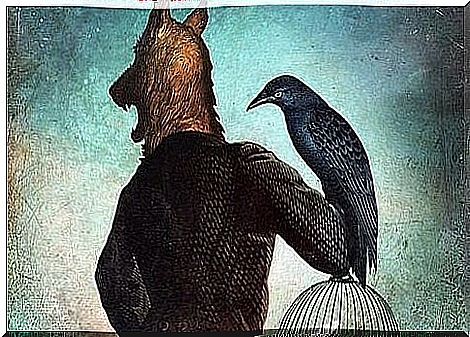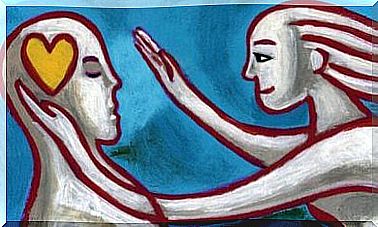How To Defend Yourself Against Passive Aggression

Passive-aggressive behavior is characterized by addiction and manipulation. The cunning art combines negative attitudes and pervasive pessimism that are so strong that they draw others to a point of deep mental and emotional exhaustion. In the same way, these qualities create a defiant personality that is unfortunately very common. This type of behavior complicates all types of relationships, whether they are romantic, platonic or familiar. How can we defend ourselves against passive aggression?
Something that most of us know to recognize almost immediately is aggressive behavior. On average, we are all observant enough to notice this type of behavior. Whether it is due to violent attitudes or means of communication, or a superiority complex and more or less explicit aggression, we recognize aggressive people.
That being said, we can not always see all the passive-aggressive behavior that is coming. It is not always easy to translate certain attitudes or reactions that fluctuate between charismatic and reactionary. . It is a personality type that is confusing and leads to mistakes. Little by little, we finally become aware of the concrete damage that this person is causing us.
On the other hand, it is worth noting that a few years ago, passive aggression was identified as a personality disorder. However, this clinical label disappeared with the fourth edition of the DSM (Diagnostic and Statistical Manual of Mental Disorders) . Now it is categorized as a type of behavior, a “non-pathological” personality type.
In the 1990s, this suspected disorder was overdiagnosed. The controversy was such that experts reached a consensus that it did not make sense to pathologize resistance, pessimism or covert aggression. That would only be right in the case of a person who permanently has this dominant, pessimistic and invalid attitude.

Characteristics of passive-aggressive behavior
We can all be passive-aggressive at some point. Without realizing it, there are certain triggers that can generate repressed hostility and irritable reactions based on bad mood. So it’s important
Let’s take a closer look at some of the most common features.
Passive-aggressive language
Passive-aggressive behavior always masks hidden anger. It is not very well hidden, and it shows itself especially through language. Hints are common, those that hurt and capture the listener through surprise. The use of confusing and even conflicting messages is also very common, as are the following sentences:
- “I do not understand what you’re trying to tell me” (even though they know exactly what we’re trying to communicate).
- “No matter what you want” (affirmations that end the discussion as soon as possible to avoid sincere and direct emotional communication).
- “Why do you behave like this? You take everything so seriously ” (the passive-aggressive person uses such expressions to humiliate the listener and push him to his limits).
Behavioral hostility and procrastination
Passive-aggressive people may seem nice and open, but that image crumbles as soon as we get to know them better. Then we see their true, passive-aggressive side.
- They tend to be shy and very critical of everything around them.
- They can be disrespectful, which makes them proud because they see themselves as anti-establishing and rebellious…
- They rely on blaming others for everything.
- Bitterness and grumpiness are two deep roots in the heart of the passive-aggressive person.
- They do not like authorities or suggestions from other people
On the other hand, by going along with this hostility, they also postpone almost everything until tomorrow. They do not do what they promise, they start things and leave them half done. They are forgetful and they do not take care of what they have, whether it is objects or personal relationships.

Emotional addiction
It is interesting how their behavioral hostility and their defiant, hostile attitude actually lead to an intense emotional dependence on others.
Their “I look down on you, but I need you” is without a doubt their most characteristic motto. It is a trait that hides a weak person where the insecurity in him makes him feel small. This is a person who needs everything from others, but at the same time he lives in the bitter crust of his hard outer shell.
How to deal with a person who shows passive-aggression
Behind passive-aggressive behavior there are several and sometimes complex realities. Depression, anxiety disorder, attention deficit and hyperactivity disorder (ADHD), low self-esteem, poor childhood, or even certain biological or environmental factors.
If you are aware that you are showing passive aggression in your daily behavior and attitude, it is best to find a good therapist who can help you understand and channel the mind and frustration you are feeling. Furthermore, it is never a bad idea to think about the following basic strategies:
- Try to understand why you act and respond in this way.
- Think and reflect before you talk or act.
- Identify what affects you the most, what concerns you, and try to confront it.
- Fight your negativity.
- Practice mindfulness.
- Cultivate your emotional intelligence.

On the other hand, if we have to deal with passive-aggressive people, one of the best ways to reduce their impact on us is to ignore them. Usually a passive-aggressive person has very low self-esteem and lacks emotional self-confidence. There are some who do not know how to deal with it when they feel that their behavior has no effect.
The more they feel that we are influenced by their words and attitudes, the more power they have. On the other hand, if they see that we do not care, they will not continue and their psychological impact on us will be reduced. Nevertheless, as we have already pointed out, it is always good to know what lies behind this type of behavior. If the person showing passive aggression is a relative, we can encourage him or her to seek professional help.
Finally, we leave you with this interesting fact about the origin of this term and when it was first used. It was during World War II when a group of military psychiatrists noticed that many soldiers were displaying some sensational behavior. They showed passive and negative opposition to executing orders. The real reason why these soldiers behaved like this was post-traumatic stress…









